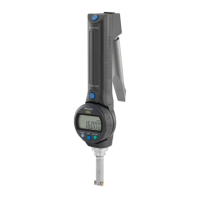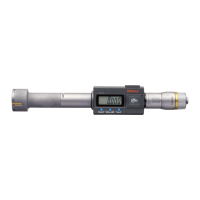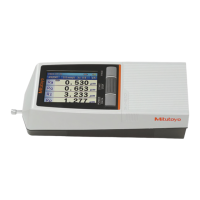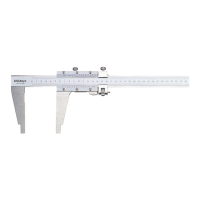28
6 Appendix
No. 99MAK004B
Term Explanation
Center dimension
dierence
Dierence between the actual dimension and the nom-
inal size at the center.
Maximum dimension
dierence
Dierence between the largest dimension among the
ve measurement points and the nominal size.
The calibration-result report and inspection report do
not indicate which of the ve measurement points was
the largest.
Minimum dimension
dierence
Dierence between the smallest dimension among the
ve measurement points and the nominal size.
The calibration-result report and inspection report do
not indicate which of the ve measurement points was
the smallest.
Range of dimension
dierences
Dierence between the largest dimension and the
smallest dimension.
Measurement
uncertainty
(standard uncertainty)
Expressed by the standard deviation (deviation be-
tween individual measured values and the average
of the group) of the variations of the measurement
results.
Expanded
measurement
uncertainty
The standard deviation is expressed by "σ" (sigma).
The standard uncertainty is expressed by 1σ, but the
expanded measurement uncertainty is expressed by
the value obtained by multiplying σ by a coecient.
Mitutoyo has adopted 2σ (a condence level of 95 %).
This is indicated in inspection reports as "coverage
factor k=2". For example, if an inspection report con-
tains "Expanded measurement uncertainty: 0.06 μm
Coverage factor (k=2)", this can be read as "with a
probability of 95 %, the measured values in the in-
spection report fall within the range of ±0.06 μm. (The
remaining 5 % may be outside the range.)".
Light-wave
interferometry
A method that directly obtains the length of a Gauge
Block by using light wavelengths based on the deni-
tion of length.
The "center dimension dierence" of K-grade products
can be obtained with the light-wave interferometry.
Comparative
measurement
A method that obtains the dimensions through com-
parison with a Gauge Block for calibration (reference
Gauge Block) whose length is known.
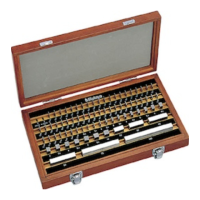
